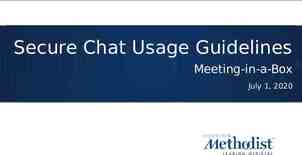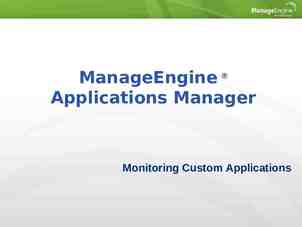ERSEA/ Final Rule/ ChildPlus Training 2020-2021 For CADA Board
22 Slides416.81 KB

ERSEA/ Final Rule/ ChildPlus Training 2020-2021 For CADA Board of Directors CADA Policy Council CADA Parent Committees CADA Eligibility Determination Staff

Eligibility Final Rule

ERSEA- What is ERSEA?

Service Area Complete a community need assessment (a) Service area. (1) A program must propose a service area in the grant application and define the area by county or sub-county area, such as a municipality, town or census tract or jurisdiction of a federally recognized Indian reservation.

Determining Community Needs Community wide strategic planning and needs assessment (community assessment). (1) To design a program that meets community needs, and builds on strengths and resources, a program must conduct a community assessment at least once over the five-year grant period.

Community Assessment The community assessment must use data that describes community strengths, needs, and resources and include, at a minimum: (i) The number of eligible infants, toddlers, preschool age children, and expectant mothers, including their geographic location, race, ethnicity, and languages they speak, including: (A) Children experiencing homelessness in collaboration with, to the extent possible, McKinney-Vento Local Education Agency Liaisons (42 U.S.C. 11432 (6)(A)); (B) Children in foster care; and (C) Children with disabilities, including types of disabilities and relevant services and resources provided to these children by community agencies; (ii) The education, health, nutrition and social service needs of eligible children and their families, including prevalent social or economic factors that impact their well-being; (iii) Typical work, school, and training schedules of parents with eligible children; (iv) Other child development, child care centers, and family child care programs that serve eligible children, including home visiting, publicly funded state and local preschools, and the approximate number of eligible children served; (v) Resources that are available in the community to address the needs of eligible children and their families; and, (vi) Strengths of the community.

Community Assessment (2) A program must annually review and update the community assessment to reflect any significant changes including increased availability of publicly-funded prekindergarten- (including an assessment of how the pre-kindergarten available in the community meets the needs of the parents and children served by the program, and whether it is offered for a full school day), rates of family and child homelessness, and significant shifts in community demographics and resources.

1302.12 Determining, verifying, and documenting eligibility. Program staff must: Conduct an in-person interview with each family. Verify information used to determine eligiblity. Create an eligibility determination record for enrolled participants. Program staff may interview the family over the telephone if an in-person interview is not possible or convenient for the family.

Age requirements For Early Head Start, except when the child is transitioning to Head Start, a child must be an infant or a toddler younger than three years old. For Head Start, a child must, Be at least three years old or, turn three years old by the date used to determine eligibility for public school in the community in which the Head Start program is located.

Verifying age Program staff must verify a child’s age according to program policies and procedures. A program’s policies and procedures cannot require families to provide documents that confirm a child’s age, if doing so creates a barrier for the family to enroll the child. CADA uses: Birth Certificates, Medicaid Cards, Immunization record, and other documents as proof of age.

Eligibility requirements. A pregnant woman or a child is eligible if: The family’s income is equal to or below the poverty line; or, The family is eligible for or, in the absence of child care, would be potentially eligible for public assistance; including TANF child-only payments, or, The child is homeless, as defined in part 1305 ; or, The child is in foster care.

Verifying eligibility To verify eligibility based on income, program staff must use tax forms, pay stubs, or other proof of income to determine the family income for the relevant time period. Relevant time period means: (A) the 12 months preceding the month in which the application is submitted; or (B) during the calendar year preceding the calendar year in which the application is submitted, whichever more accurately reflects the needs of the family at the time of application.

Verifying eligibility We have other documents to verify if family is considered homeless, or in foster care.

Eligibility requirements. If the family does not meet a program may enroll a child who would benefit from services, provided that these participants only make up to 10 percent of a program’s enrollment.

Additional allowances for programs. A program may enroll an additional 35 percent of participants whose families do not meet a criterion described in paragraph (c) of this section and whose incomes are below 130 percent of the poverty line, if the program: Establishes and implements outreach, and enrollment policies and procedures to ensure it is meeting the needs of eligible pregnant women, children, and children with disabilities, before serving pregnant women or children who do not meet the criteria . If a program chooses to enroll participants who do not meet a criterion and whose family incomes are between 100 and 130 percent of the poverty line, CADA must be able to report to the Head Start regional program office: How it is meeting the needs of low-income families or families potentially eligible for public assistance, homeless children, and children in foster care, and include local demographic data on these populations; Outreach and enrollment policies and procedures that ensure it is meeting the needs of eligible children or pregnant women, before serving over-income children or pregnant women; Efforts, including outreach, to be fully enrolled with eligible pregnant women or children; Policies, procedures, and selection criteria it uses to serve eligible children; Its current enrollment and its enrollment for the previous year; The number of pregnant women and children served. The eligibility criteria category of each child on the program’s waiting list.

Eligibility duration If a child is determined eligible and is participating in a Head Start program, he or she will remain eligible through the end of the succeeding program year except that the Head Start program may choose not to enroll a child when there are compelling reasons for the child not to remain in Head Start, such as when there is a change in the child's family income and there is a child with a greater need for Head Start services. If a child moves from an Early Head Start program to a Head Start program, program staff must verify the family’s eligibility again. If a program operates both an Early Head Start and a Head Start program, and the parents wish to enroll their child who has been enrolled in the program’s Early Head Start, the program must ensure, whenever possible, the child receives Head Start services until enrolled in school, provided the child is eligible.

Record Keeping A program must keep eligibility determination records for each participant and ongoing records of the eligibility training for staff. A program may keep these records electronically.

Record Keeping Each eligibility determination record must include: Copies of any documents or statements, including declarations, that are deemed necessary to verify eligibility A statement that program staff has made reasonable efforts to verify information by: Conducting either an in-person, or a telephone interview with the family.

Record Keeping A statement that identifies whether: The family’s income is below income guidelines for its size, and lists the family’s size; The family is eligible for or, in the absence of child care, potentially eligible for public assistance. The child is a homeless child or the child is in foster care. The family was determined to be eligible

Record Keeping A program must keep eligibility determination records for those currently enrolled, as long as they are enrolled, and, for one year after they have either stopped receiving services; or are no longer enrolled.

Training on eligibility A program must train all governing body, policy council, management, and staff who determine eligibility on applicable federal regulations and program policies and procedures. Training must, at a minimum: Include methods on how to collect complete and accurate eligibility information from families and third party sources; Incorporate strategies for treating families with dignity and respect and for dealing with possible issues of domestic violence, stigma, and privacy; and, Explain program policies and procedures that describe actions taken against staff, families, or participants who attempt to provide or intentionally provide false information. Program policies and procedures on violating eligibility determination regulations. A program must establish written policies and procedures that describe all actions taken against staff who intentionally violate federal and program eligibility determination regulations and who enroll pregnant women and children that are not eligible to receive Early Head Start or Head Start services. See CADA disciplinary action policy and procedure. A program must train management and staff members who make eligibility determinations within 90 days of hiring new staff. A program must train all governing body and policy council members within 180 days of the beginning of the term of a new governing body or policy council. A program must develop policies on how often training will be provided after the initial training. Training for governing body and policy council members within the first 120 days of a new program term, and 120 of a new governing body. Ongoing training is provided as changes occur or are updated, and as requested or needed.

Q&A If you have any questions or concerns, you can reach me by email at [email protected] This training video will be made available for future training and as a refresher for those who would like to revisit it.






